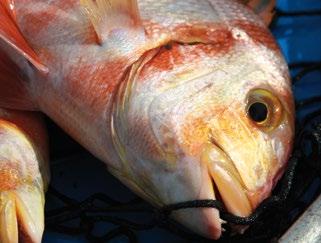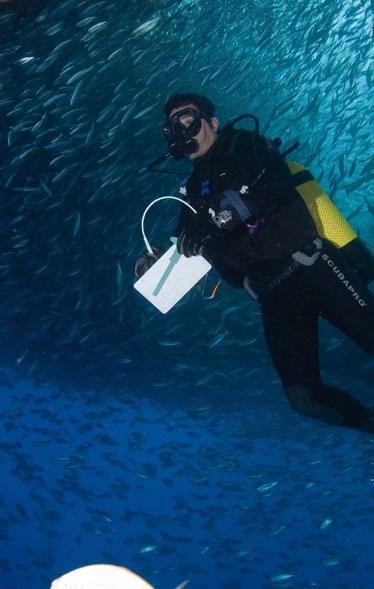
1 minute read
Professional fishing
Types of fish products
Fish are caught using traditional methods in the waters surrounding Gran Canaria in compliance with fishing and health regulations, guaranteeing their sustainability, as well as their traceability and safety.
It is worth noting that artisanal fishing is done with fish traps and / or hook tackle, such as line and longline, as well as swordfish nets. These techniques are are passive and set for just a few hours, meaning that, used correctly, they give high-quality, sustainable products, and avoid crushing, typically a result of large catches. Even the various species of tuna, including bluefin tuna, are fished using hooks and are well above the minimum authorized sizes.

What’s more, trawling gear is banned in the Canary Islands, which prevents damage to the seabed from fishing vessels, as well as giving fish populations a time to recover. Lastly, many of our fishermen make sure their fish are slaughtered humanely in water and ice, preventing stress and boosting the fish’s quality and preservation time. They are then transported in isothermal containers packed with ice and, once unloaded at the Authorized Point of First Sale, are legally certified and issued documents that prove their origin and traceability.



Aquaculture
Aquaculture in Gran Canaria began in the eighties, and the island has become one of Spain’s most important aquaculture producers, especially of sea bass (Dicentrarchus labrax), although seabream is also produced industrially. (Sparus aurata).
In Gran Canaria, all aquaculture is whole-farm, meaning the fry are born and raised in captivity from imported parents, and never obtained via extractive fishing techniques. From the very beginning, the fry eat high-quality feed and live modern tanks on land.
When the seabream and seabass are big enough, they are moved to floating sea cages until they are ready to be sold whole and fresh.
One of the main advantages of island aquaculture is the water’s thermal stability, between 18 and 25ºC, which allows the fish to grow all-year round, unlike extreme temperatures found in other latitudes that make it impossible for the fish to grow in the open sea.








